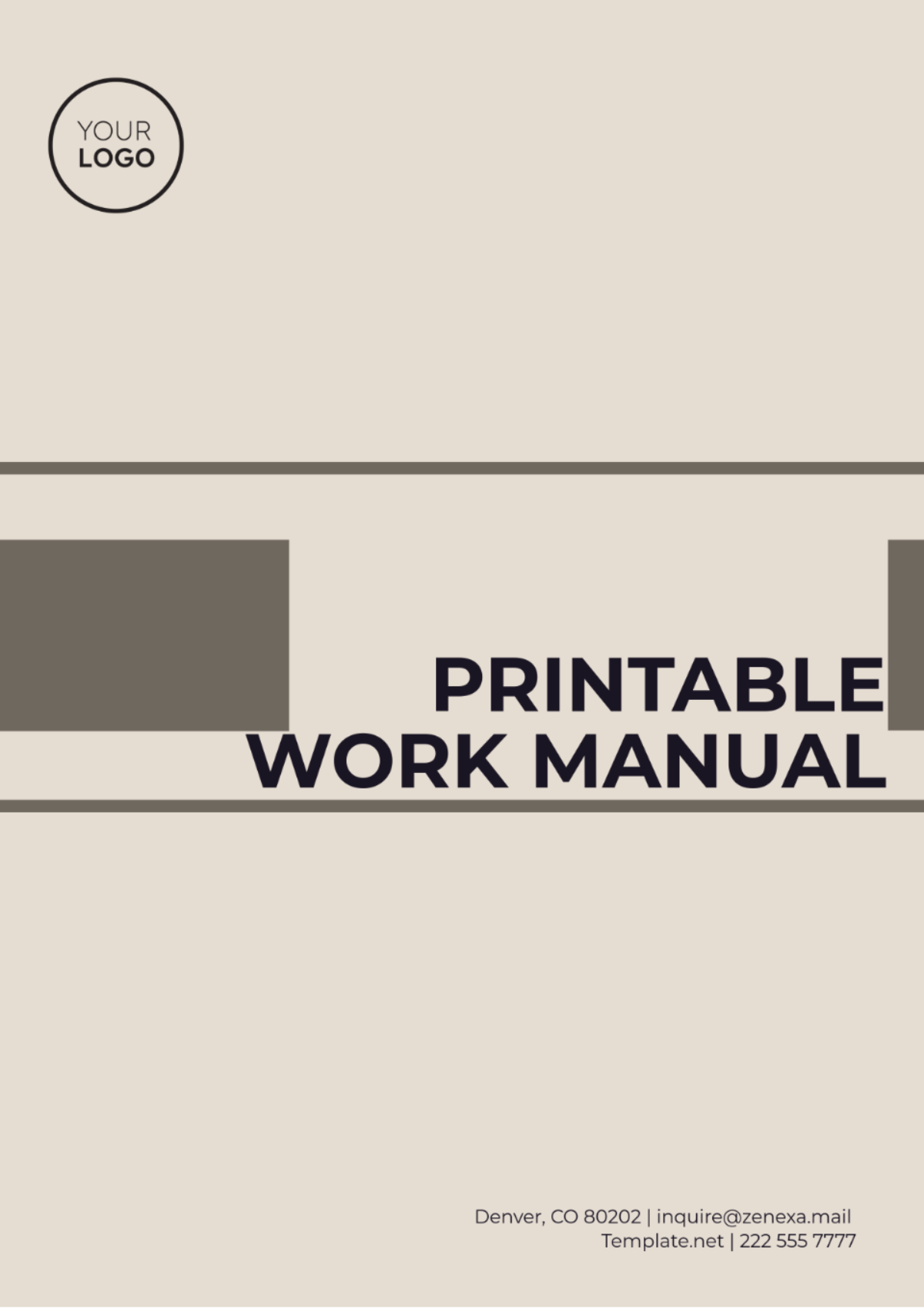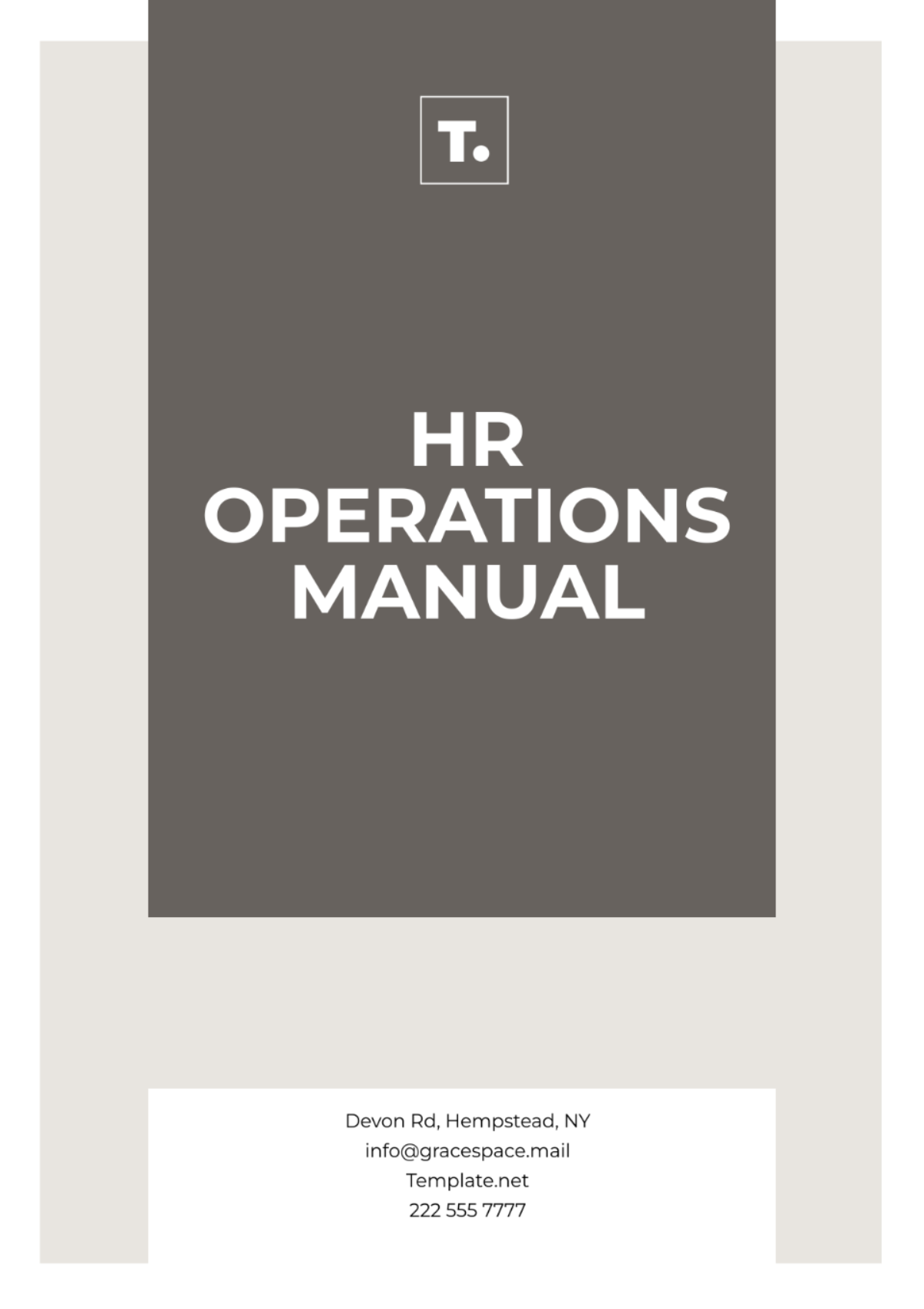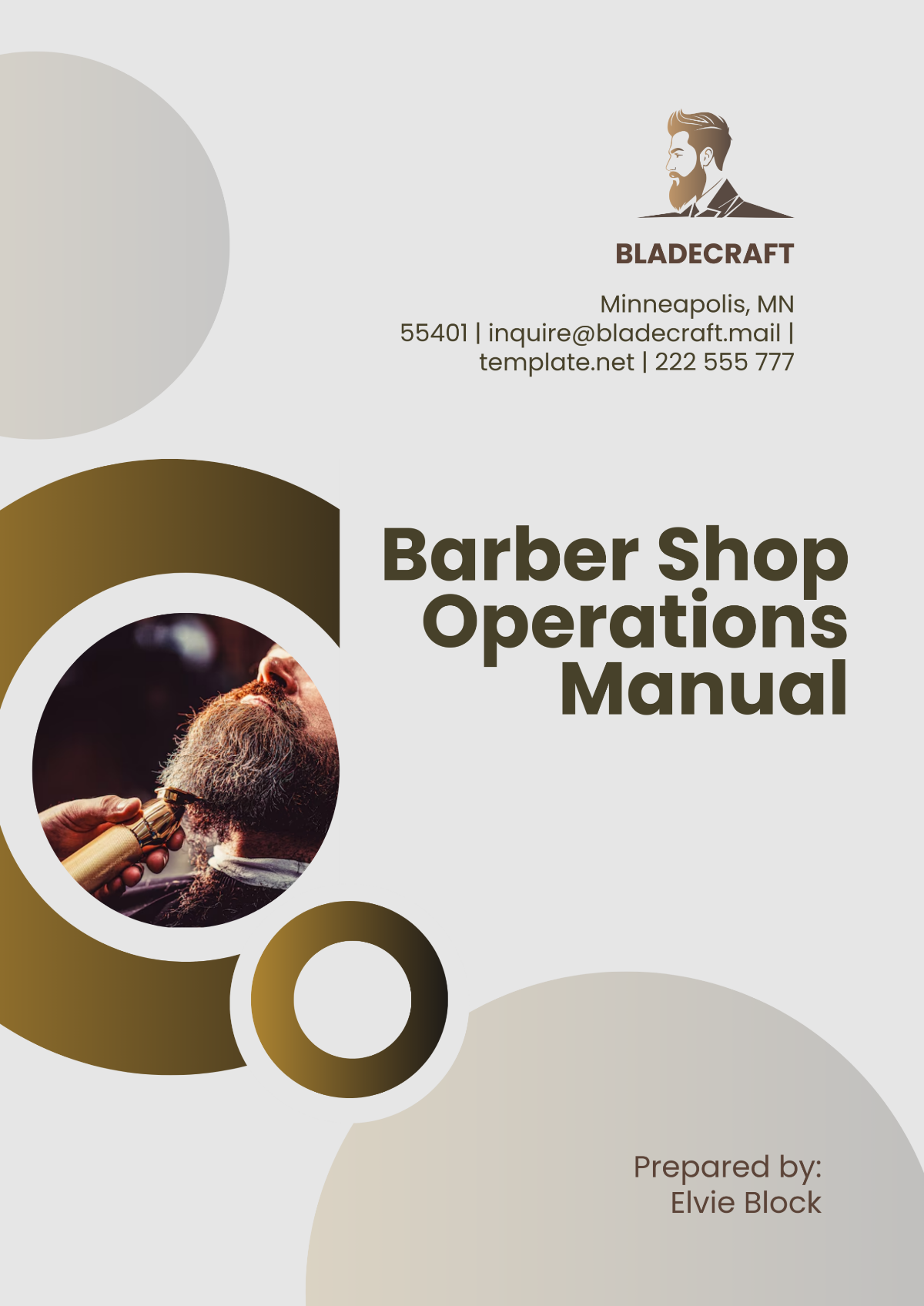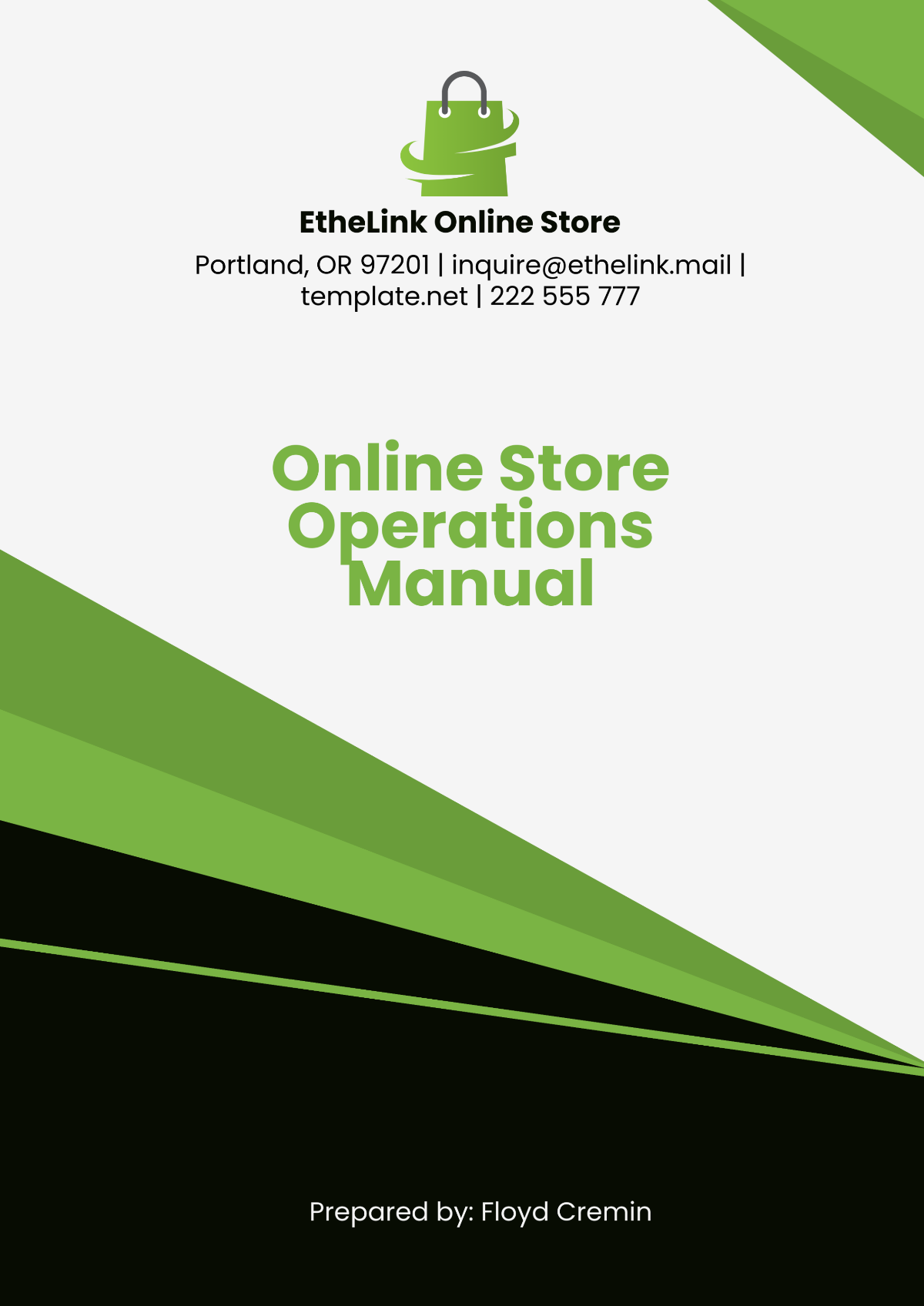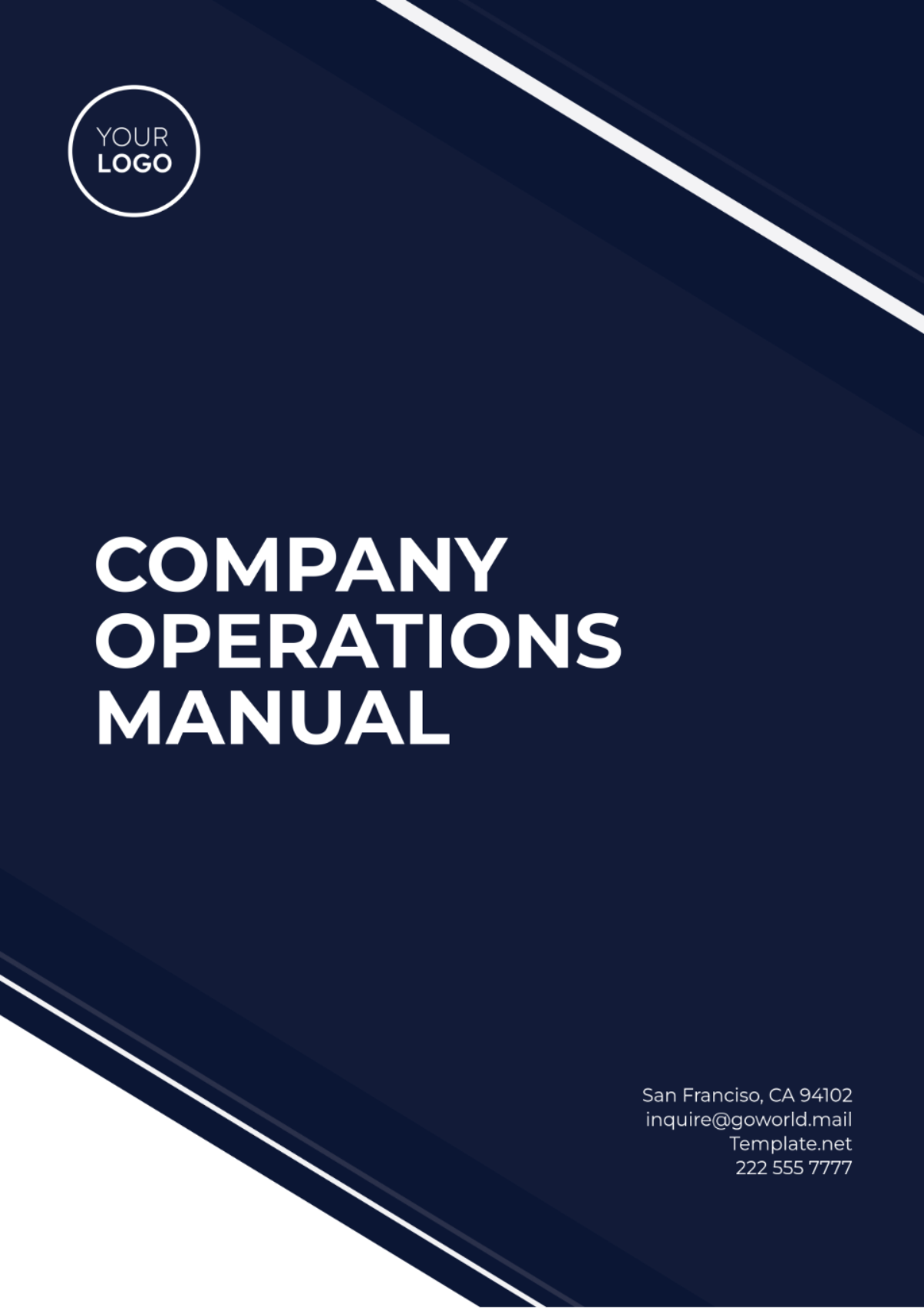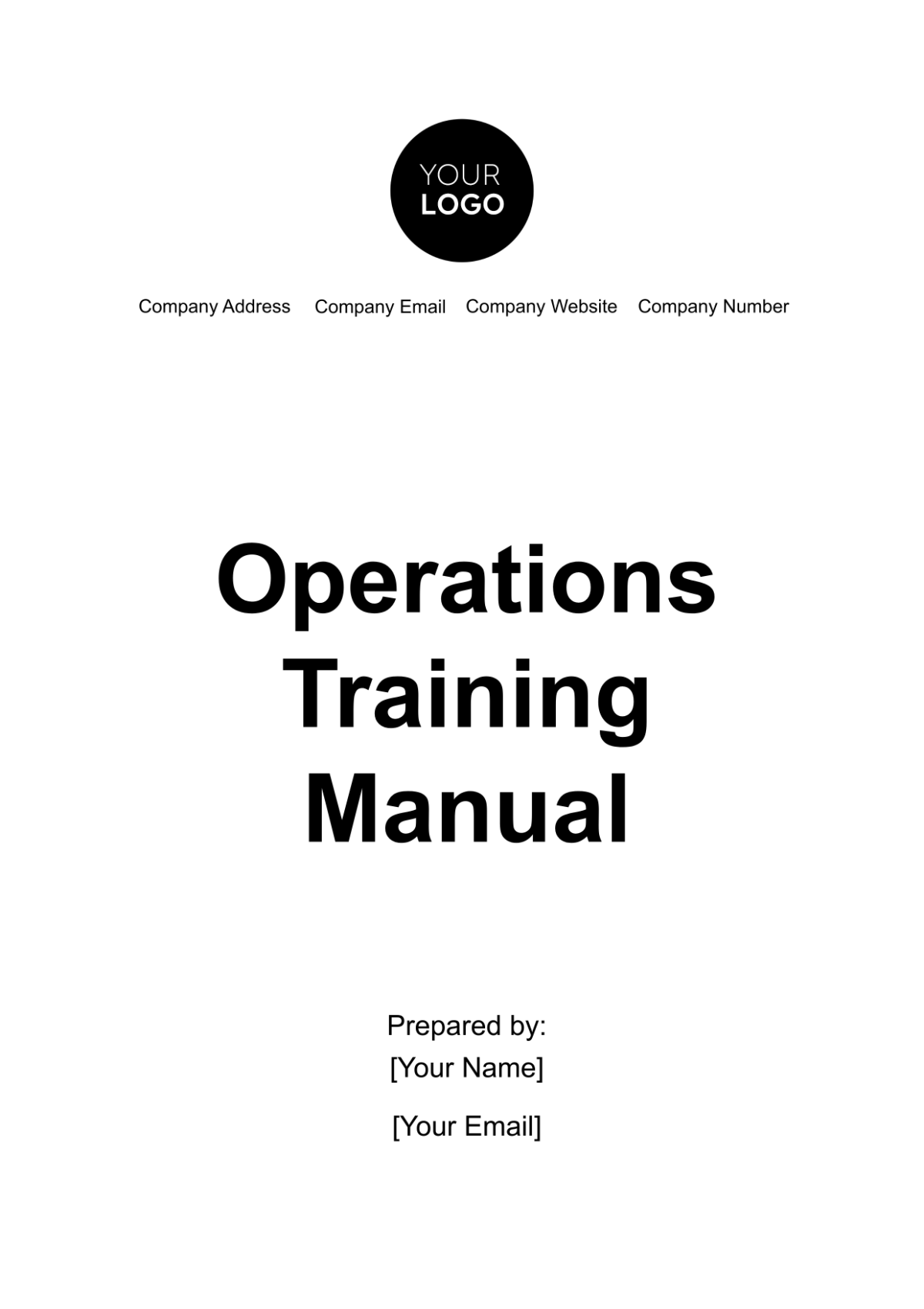Online Store Operations Manual
I. Introduction
A. Purpose of the Manual
This manual serves as the primary guide for managing and operating [Your Company Name]’s online store. It provides a comprehensive framework to ensure operational consistency, efficiency, and quality. The manual aims to align all departments and employees with the company’s values and goals, creating a smooth and effective working environment. By following these procedures, employees can maintain a high level of customer service, ensure streamlined order fulfillment, and address any operational issues proactively. Additionally, this document serves as a training resource for new hires and can be referenced at any point during day-to-day operations.
II. Organizational Structure
B. Roles and Responsibilities
The operational success of an online store is largely driven by the efficiency and coordination of various roles within the company. Below is a detailed breakdown of each key role and its responsibilities.
Role | Responsibilities |
|---|---|
Online Store Manager | Oversees the day-to-day operations, ensures targets are met, and ensures adherence to company policies. The manager also plays a pivotal role in strategic planning and adjusting operational processes for greater efficiency. |
Customer Service Team | Handles customer inquiries, complaints, and feedback to maintain satisfaction and loyalty. This team is the face of the company, ensuring customer concerns are addressed promptly and effectively to enhance the brand’s reputation. |
Inventory Specialist | Manages stock levels, ensures timely replenishments, and prevents stockouts or overstock situations. This individual also plays a key role in data analysis to forecast demand and plan for seasonal fluctuations. |
IT Support | Maintains the functionality of the e-commerce platform, resolves technical issues, and implements new features. The IT team ensures that the website remains secure, updated, and user-friendly, contributing to a seamless shopping experience. |
Marketing Specialist | Designs and executes promotional campaigns, manages social media, and enhances brand visibility. This role requires creativity and data-driven decision-making to ensure campaigns reach target customers and generate maximum engagement. |
III. Platform Management
A. E-Commerce Platform Overview
The e-commerce platform used by [Your Company Name] is designed to offer an optimal shopping experience for customers while supporting the operational needs of the business. This platform is fully integrated with payment gateways, inventory management, shipping carriers, and customer service tools. It provides the company with the flexibility to scale, manage high traffic volumes, and adapt to emerging technology. Furthermore, the platform is mobile-optimized, ensuring that customers can shop seamlessly from any device, enhancing user engagement and reducing bounce rates. The platform supports real-time inventory updates, allowing both customers and employees to view accurate stock levels at any given time.
B. Daily Platform Maintenance Tasks
To ensure smooth operation and prevent disruptions, the following daily maintenance tasks must be performed:
System Monitoring: Regular checks of server uptime, page load speeds, and functionality are essential. Issues such as slow page loading can cause frustration and abandonment of carts, so it's important to monitor these metrics and resolve any issues immediately.
Bug Fixes: Any errors reported by customers or internal staff, such as broken links, incorrect product details, or payment issues, must be addressed swiftly. Failure to fix bugs can lead to negative customer experiences, which may hurt the company’s reputation.
Content Updates: Product listings, including descriptions, images, and prices, must be kept up to date. New products should be added promptly, and old or discontinued items should be removed to prevent customers from attempting to purchase them.
C. Technical Support Protocols
In the event of a technical issue with the platform, the following steps should be followed:
Identification: First, identify the specific problem by reviewing error reports, customer complaints, and system alerts.
Documentation: Document the issue thoroughly, including the steps leading to the problem and its impact on the platform, so the IT team can easily diagnose and resolve it.
Notification: Notify the IT support team as soon as the issue is identified. Ensure that customer-facing departments are informed about the situation to prevent unnecessary customer frustration.
Resolution: IT support will provide a resolution or workaround, which should be implemented as quickly as possible. The problem and the solution must be documented for future reference.
Customer Communication: If the issue has impacted customers, ensure that they are informed about the resolution and provided with any compensation, such as discounts, if necessary.
IV. Inventory Management
A. Inventory Tracking System
An accurate and real-time inventory tracking system is critical to preventing issues like overselling, stockouts, or backorders. The inventory management system provides [Your Company Name] with comprehensive visibility into the stock levels across all product categories, helping to automate reorders, track sales trends, and identify slow-moving products. Additionally, this system integrates with both the website and the warehouse management system to ensure that updates are synchronized across all platforms.
Category | Minimum Stock Level | Restocking Frequency |
|---|---|---|
Electronics | 50 units | Weekly |
Apparel | 100 units | Bi-weekly |
Accessories | 200 units | Monthly |
B. Restocking Process
Restocking is a key component of inventory management. The process begins when inventory levels fall below the established minimum stock level. This ensures that there is no disruption in fulfilling customer orders, especially during peak demand periods. The following steps outline the process for restocking:
Inventory Monitoring: Using the inventory system, monitor the levels of products throughout the day. Automated alerts notify the team when stock is running low.
Order Placement: When an alert is triggered, the inventory specialist places an order with suppliers to replenish stock. The quantity and timing of the order are determined by sales data and forecast trends.
Receiving Stock: Once stock arrives at the warehouse, it must be checked for quality and accuracy. Any discrepancies in the received quantities or quality of goods should be addressed immediately with the supplier.
Updating Inventory: After quality checks, the inventory system is updated with the new stock levels, ensuring that the website reflects accurate availability to customers.
C. Managing Overstock
Managing excess inventory is equally important as ensuring sufficient stock. Overstock can tie up capital and reduce profitability, which is why the following strategies are implemented:
Discounts and Promotions: Slow-moving inventory can be discounted through special sales or promotions. For example, end-of-season clearance events can be a great way to move excess stock while providing value to customers.
Bundling: Products can be bundled together in value packs or promotional bundles, which can help increase the perceived value of the offer and encourage customers to purchase more.
Donations or Liquidation: In extreme cases, excess inventory may be donated to charity or sold at liquidation prices to minimize losses and clear space for more popular items.
V. Order Fulfillment
A. Order Processing Workflow
A streamlined order processing workflow ensures that customers receive their products promptly and with the correct details. The order fulfillment process begins as soon as a customer places an order and continues until the product is successfully delivered. The key steps are as follows:
Order Confirmation: Once an order is placed, the customer receives an automatic confirmation email, and the order is added to the system for processing.
Picking and Packing: The warehouse team will pick the items from inventory based on the details provided in the order. Once items are selected, they are carefully packed, ensuring that they are protected during transit.
Shipping: After packing, orders are handed over to logistics partners for delivery. The platform provides customers with tracking information so they can follow their orders in real-time.
B. Standard Packing Guidelines
Packing products securely is essential for minimizing damage during shipment and ensuring customer satisfaction:
Eco-Friendly Materials: Packaging should be sustainable, made of recyclable or biodegradable materials, to align with the company’s environmental goals.
Item Protection: Fragile items should be cushioned with bubble wrap or foam padding, while clothing items should be folded neatly and packed in resealable plastic bags.
Correct Labelling: Each package should be labelled clearly with the customer’s address, order details, and any necessary return instructions.
C. Shipping Options
Offering flexible and efficient shipping options is crucial for maintaining customer satisfaction. Different shipping methods cater to different customer needs, and each option should be carefully selected based on urgency and budget. The following shipping options are available:
Carrier | Delivery Speed | Cost |
|---|---|---|
Standard Shipping | 5-7 business days | $5 |
Express Shipping | 2-3 business days | $15 |
Same-Day Delivery | Within 24 hours | $25 |
Each option is priced according to the delivery time and customer preferences, with the fastest shipping method being the most expensive. Offering multiple options allows customers to choose according to their needs and budget.
VI. Customer Service
A. Handling Customer Inquiries
Customer service is a key pillar of [Your Company Name]’s commitment to excellent service. All customer inquiries should be handled professionally and with care. To provide a consistent experience, the following practices should be followed:
Timely Response: All inquiries must be acknowledged within [24] hours, and resolution should be provided as soon as possible.
Empathetic Approach: Representatives should maintain a friendly and empathetic tone, acknowledging the customer’s concerns and working towards a solution that meets their needs.
Solution-Oriented: Always aim to offer a practical and fair solution, whether it’s resolving a product issue, processing a return, or providing a refund.
B. Returns and Refund Policy
To maintain customer satisfaction, a clear and transparent return and refund policy is essential:
Return Period: Customers are eligible to return products within [30] days of receipt, provided the items are in unused, resellable condition.
Refund Processing: Refunds are processed within [7] business days after receiving the returned product. Customers will be refunded the full purchase price minus any applicable shipping charges.
Exceptions: Items such as customized products or perishable goods may not be eligible for returns.
C. Escalation Protocol
If a customer issue cannot be resolved through normal channels, the issue should be escalated to a supervisor:
Log the Issue: All unresolved issues must be recorded in the customer service system for tracking purposes.
Escalate to Supervisor: Supervisors should review the case and provide additional assistance, whether by offering a discount, exchange, or other forms of compensation.
Customer Follow-Up: The customer should be updated on the status of their case and receive feedback regarding the resolution within [48] hours.
VII. Marketing and Promotions
A. Social Media Campaigns
Social media platforms are critical tools for increasing brand visibility, engaging with customers, and driving traffic to the online store. At [Your Company Name], social media campaigns are designed to align with broader marketing objectives and foster direct communication with customers. The marketing team should focus on utilizing platforms like Facebook, Instagram, Twitter, and TikTok to share promotional content, product launches, and updates.
Content Creation: Develop content that resonates with the target audience, including product demonstrations, behind-the-scenes looks at the company, user-generated content, and influencer partnerships.
Engagement: Social media is not just about posting advertisements but also about engaging with customers by responding to comments, messages, and mentions. Prompt and helpful responses contribute to building a positive relationship with followers.
Tracking Success: Implement metrics such as engagement rate, click-through rate, and conversion rate to measure the success of each campaign. Regularly adjust content and strategy based on the data received from the audience.
B. Email Marketing
Email marketing remains one of the most effective ways to retain customers and promote sales. At [Your Company Name], email marketing will be used for customer retention, product promotions, and updates on new arrivals.
Newsletter Strategy: Send weekly or bi-weekly newsletters that feature special offers, exclusive product launches, and articles related to your products or industry.
Personalization: Utilize customer data to personalize emails. For instance, send a tailored message on the anniversary of their first purchase or a birthday discount to make the experience feel more individualized.
A/B Testing: Conduct regular A/B tests to optimize open rates, subject lines, email content, and call-to-action buttons. By continuously refining email campaigns, you can ensure maximum engagement with customers.
C. Seasonal Promotions
Seasonal promotions provide an opportunity to drive sales during key times of the year, capitalizing on shopping habits during holidays and events. For example, Black Friday, Christmas, and other major sales events are great opportunities to offer substantial discounts to drive both new and repeat business.
Season | Promotion | Discount Offered |
|---|---|---|
New Year’s Sale | Sitewide Discount | 25% |
Summer Clearance | Select Items | 50% |
Black Friday | Storewide Deals | 70% |
Back-to-School Sale | Bundled Discounts | 30% |
Holiday Special | Limited-Time Offers | 40% |
Each seasonal promotion should be well-planned with early marketing efforts to build anticipation. Collaborate across departments to ensure there is sufficient stock, shipping timelines are met, and the marketing messages are aligned with customer expectations.
VIII. Financial Management
A. Payment Processing
Effective and secure payment processing is a critical component of any online store. The payment gateways used by [Your Company Name] should offer a variety of payment methods to accommodate different customer preferences and ensure seamless transactions.
Accepted Payment Methods: The company accepts a wide range of payment methods, including credit and debit cards, digital wallets (such as PayPal and Apple Pay), and buy-now-pay-later services like Afterpay and Klarna.
Payment Security: Security measures such as SSL encryption should be implemented to ensure that customers' financial information is always protected. [Your Company Name] will also follow the Payment Card Industry Data Security Standard (PCI DSS) guidelines to maintain compliance.
Transaction Fees: The platform incurs processing fees for each payment method, which should be factored into the overall pricing strategy. The table below outlines these fees.
Payment Method | Processing Fee (%) |
|---|---|
Credit Cards | 2.5 |
Digital Wallets | 1.8 |
Buy-Now-Pay-Later | 3.0 |
B. Budget Allocation
Proper financial planning ensures that [Your Company Name] operates efficiently, meets its objectives, and continues to grow. Budget allocations should be carefully planned and reviewed quarterly to ensure alignment with company goals. Below is an overview of the annual budget allocation for key areas:
Category | Annual Budget ($) | Purpose |
|---|---|---|
Marketing | $50,000 | Fund advertising campaigns, social media promotions, and customer loyalty initiatives. |
Technology | $100,000 | Invest in platform upgrades, new features, cybersecurity measures, and technical support. |
Staff Training | $20,000 | Train employees on the latest technologies, e-commerce trends, and customer service best practices. |
Inventory & Restocking | $200,000 | Ensure timely restocking of high-demand items and buffer stock to avoid stockouts. |
The financial management team should track these budgets regularly to avoid over-expenditure and ensure that resources are directed toward high-impact areas that drive growth and efficiency.
IX. Performance Metrics
A. Key Performance Indicators (KPIs)
The effectiveness of operations is monitored through KPIs, which provide insight into the overall health of the business and help identify areas for improvement. Regular tracking of KPIs ensures that the store meets or exceeds its performance goals. Key KPIs include:
Customer Satisfaction Score (CSAT): This metric tracks customer feedback and satisfaction with their purchase and interaction with the company. A target of [90%] or higher is ideal.
Order Accuracy Rate: This KPI measures the percentage of orders that are correctly processed and shipped without errors. The target accuracy rate is above [98%].
Average Fulfillment Time: This tracks the time taken from order receipt to dispatch. An efficient order fulfillment process should ensure that the average fulfillment time is [24] hours or less.
Sales Conversion Rate: This measures how many site visitors convert into paying customers. Improving conversion rates is crucial for increasing revenue without needing to drive more traffic.
B. Monthly Sales Report
Sales reports offer valuable insights into the company’s financial health and market trends. These reports should be generated monthly and reviewed by management to inform decisions about inventory, marketing, and sales strategies.
Month | Total Sales ($) | Orders Processed | Returns (%) |
|---|---|---|---|
January | $150,000 | 2,500 | 2.5 |
February | $135,000 | 2,300 | 2.8 |
March | $145,000 | 2,400 | 2.3 |
April | $160,000 | 2,600 | 1.9 |
This table tracks overall sales trends, which helps assess seasonal fluctuations, identify popular product categories, and understand customer behavior. By monitoring these numbers, [Your Company Name] can adapt strategies to boost sales during slower months and maintain growth during peak periods.
9.3 Data-Driven Decisions
Data analysis should be central to decision-making processes at [Your Company Name]. The sales team, marketing department, and inventory management team should regularly analyze trends and adjust strategies based on this data. By analyzing product performance, customer demographics, and sales patterns, the company can make informed decisions about product offerings, pricing strategies, and promotional campaigns.
X. Risk Management
A. Security Measures
Security is a top priority for [Your Company Name] to protect customer data and financial transactions. The company employs a comprehensive set of security protocols to safeguard against cyber threats and data breaches:
Data Encryption: All customer payment data and personal details are encrypted using advanced encryption technologies, ensuring that sensitive information is never exposed.
Two-Factor Authentication (2FA): Administrative access to the online store platform requires two-factor authentication to prevent unauthorized users from gaining access.
Quarterly Security Audits: Regular audits will be conducted by third-party security experts to identify vulnerabilities in the system and rectify them promptly.
B. Contingency Plans
In any business, unforeseen events can disrupt normal operations. To minimize the impact of such disruptions, [Your Company Name] has established comprehensive contingency plans:
System Downtime: If the online store experiences unexpected downtime, a "maintenance mode" page will be displayed to customers, with an estimated resolution time. Customers should be informed of delays, and any affected orders should be prioritized once the system is operational.
Supply Chain Disruption: In case of a disruption in supply chains, [Your Company Name] works with multiple suppliers to ensure alternative sources of inventory are available. Additionally, advanced planning and strong relationships with logistics partners help mitigate delays.
Payment Gateway Failure: If a payment gateway fails, an alternative payment method should be offered to customers, such as cash on delivery or an alternate payment processor. Customers will be promptly informed and provided with assistance.
XI. Conclusion
The [Your Company Name] Online Store Operations Manual is a comprehensive document that guides employees in performing their roles effectively and efficiently. By adhering to these procedures and standards, the company ensures that operations are smooth, customer satisfaction is high, and business growth is sustainable. This manual should be reviewed regularly and updated as necessary to adapt to technological advancements, market trends, and customer expectations. By following these best practices, [Your Company Name] is positioned to thrive in the evolving world of e-commerce well into the future.



